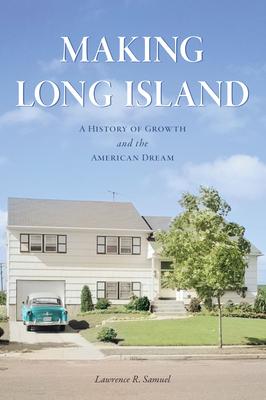Discover the history of the development of Long Island and its intimate relationship with New York City.
Beginning in the Roaring Twenties, Wall Street money looked eastward to Nassau and Suffolk counties looking generate wealth from a land boom. After the Great Depression and World War II, Long Island was the site of the creation of the quintessential postwar American suburb, Levittown. Levittown and its spinoff suburban communities served as a primary symbol of the American dream through affordable home ownership for the predominately White middle class and established a core attribute of the national mythology. Starting in the 1960s, the dream began to dissolve, as the postwar economic engine ran out of steam and Long Island became as much urban as suburban.
Author Lawrence R. Samuel charts how the island evolved over the decades and largely detached itself from New York City to become a self-sustaining entity with its own challenges, exclusions and triumphs.
